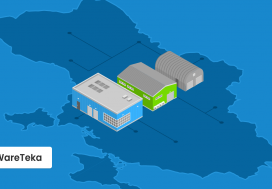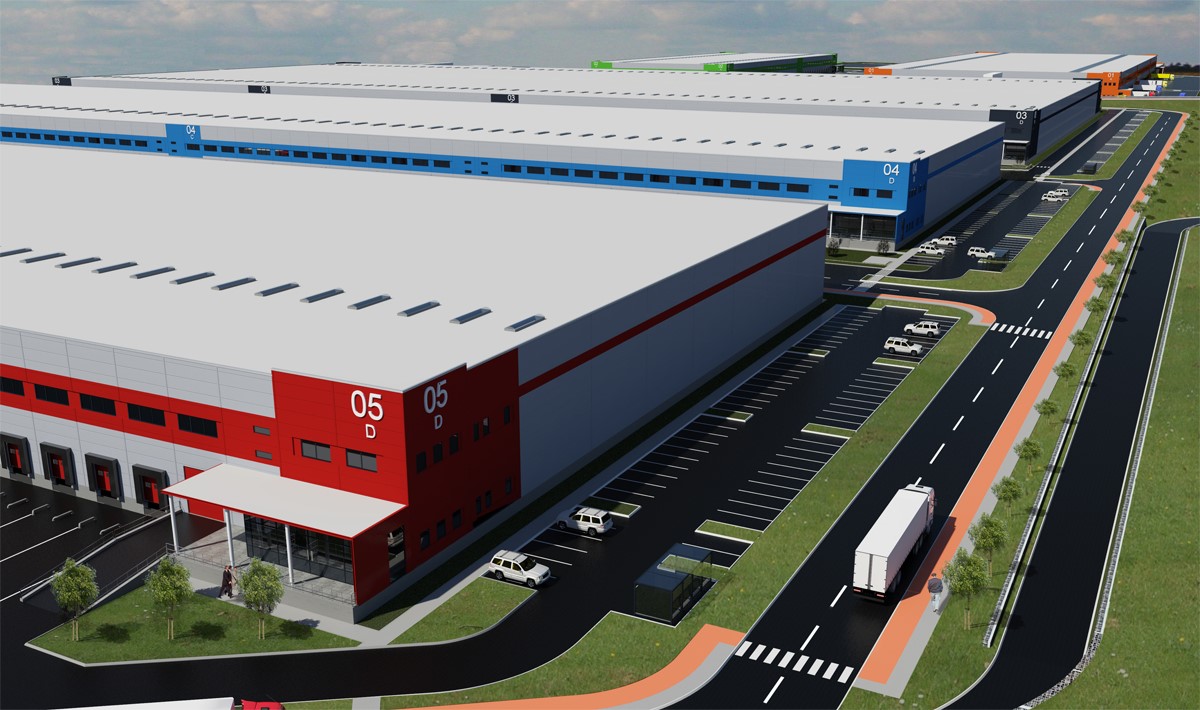
- What is a logistics hub?
- Differences between logistics hubs and warehouses
- How can multimodal hubs improve supply chains?
- Examples of logistics hubs
- Example # 1. Magna Park in Great Britain
- Example # 2. DHL’s 3PL logistics hub in Leipzig
- Example # 3. “The Dry Port” in Odesa
- Conclusions
Companies accept, process, and deliver millions of freights daily. Changing patterns in the import and export are constantly growing. To be competitive in the world market, companies need to stretch the capacity of their warehouses.
European countries build large industrial parks to straighten their logistics system. The hubs look like enormous size warehouses that can process huge volumes of freights.
In the article, we’ll talk about what a logistics hub is, differences between such complexes and warehouses. Keep reading to know why it’s suitable for companies to invest in the construction of large industrial logistics centers and see some examples.
What is a logistics hub?
A logistics hub is a huge city of warehouses, where companies can perform the full range of operations to process freights. Some logistics parks can process more than 1 million TEU (the twenty-foot equivalent unit that is used to describe a container’s capacity). The area of a logistics hub can be more than 1 million square meters. The trend to construct huge logistics complexes is popular worldwide.

As goods are stored, processed, and redeployed among warehouses in logistics parks, building a hub is a great solution to consolidate material flows. The other feature of a logistics park is that freights can be unloaded from the road, railway, sea, air transport. And then, goods can be loaded in the same way. Services related to inventory management, such as delivery, customs clearance, storage, are worked in the field.
A logistics hub is an entire city with its working space, transport maintenance depots, bays, custom clearance points, packing departments, parking, office space, etc. The infrastructure of the parks depends on business requirements.
Large logistics companies that operate worldwide construct logistics complexes, covering several million square meters. Costs to build and maintain such objects are as high as 3 million dollars. Logistics centers are located near the air- and seaports, factories, highways, etc.
Differences between logistics hubs and warehouses
At first glance, a warehouse and logistics hub has the same functions. However, in terms of supply chain management, they are completely different. The main differences are:
- Size. The area of one of the largest Amazon’s warehouses is 93.000 square meters. Logistics hubs are significantly larger than warehouses. To compare, the size of the “Berlin-South” logistics park, which is located in Grossbeeren city, is 2.5 million square meters.
- Range of operations. In warehouses, workers load and unload, accept, store, pick, and pack goods. The list of operations a logistics hub can do is extended. For example, stevedoring, customs clearance, and transportation services are available here.
- Output. The operations scale in logistics hubs is impressive. The output of some parks is more than 1 million TEU per day. Each unit is equivalent to a 20-foot-long intermodal container. Generally, logistics hubs deal with multimodal freights, so the most suitable storage conditions are provided here. For example, foodstuff, grains, metal constructions can be stored in different temperature zones. Moreover, regardless of the season and temperature fluctuations, the workplace should be comfortable for staff.
- Location. Warehouses can be located anywhere. The location depends on a company’s business goals. For example, a warehouse can be located near production facilities or an end-user. Location is the main feature of a regional logistics hub. Large complexes are located near air- and seaports. Logistics hubs need to transfer freights by any type of transport.
- Infrastructure. Generally, a warehouse is freestanding. But a logistics hub is an entire city. Several warehouses, customs clearance, and dangerous goods zones, office space, transport maintenance depo can be located here. The infrastructure depends on business needs.
- Variations in ownership. Only large enterprises can maintain logistics hubs independently. But even they need the help of local authorities. So, in most cases, there are several owners of logistics hubs. Tenants are located in different zones by their business activities.
So, a logistics hub isn’t just a warehouse. It’s an enormous city that is designated for the needs of companies and effective supply chain management.
How can multimodal hubs improve supply chains?
Nowadays, traffic conditions are the main problem for some countries, including Ukraine. The large volumes of vehicles ply the roads and deliver goods to warehouses.

The experience of the main European countries has shown that logistics hub construction is a great solution to deal with the problem. Generally, logistics complexes are built away from cities. So, it helps to consolidate transport flows in one place and alleviate road infrastructure.
Logistics hub construction is an opportunity for companies to set up a cluster and join logistics forces. So, every player in the network has sustained activity. By consolidation, expenses are shared between companies. Thus, operation costs decrease for every member.
Examples of logistics hubs
Logistics hubs are popular in European countries. We’ll show you 3 examples of their implementation in Great Britain, Germany, and Ukraine.
Example # 1. Magna Park in Great Britain
Magna Park Logistics Hub was established back in 1987. Earlier, there was an airfield here. The ground was used for military purposes during the Second World War. Then, the area was converted into the ground to test aircraft.
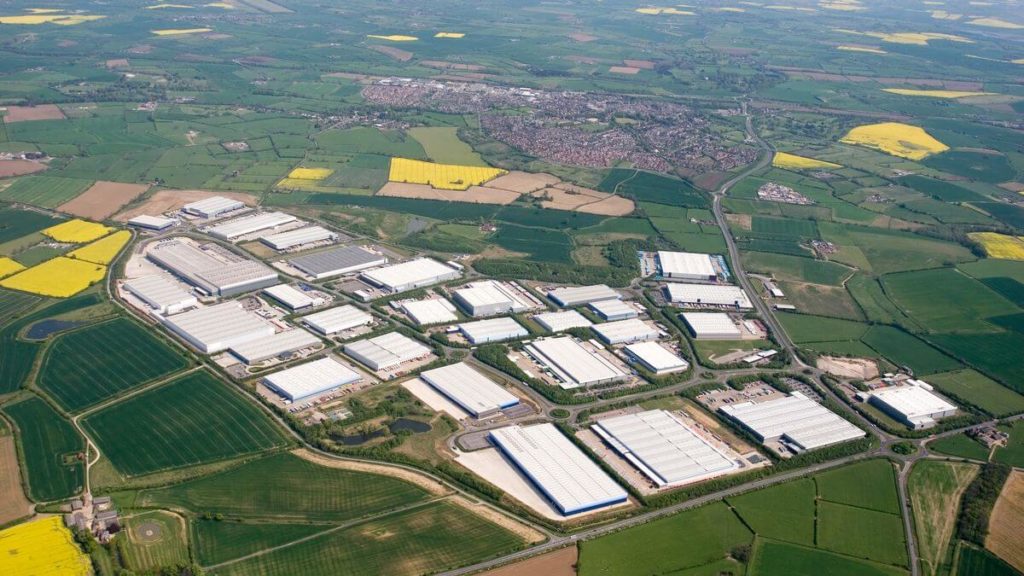
Nowadays, the size of Magna Park is more than 550 acres (about 2.2 million square meters). The logistics complex has a prime location, as it’s situated in the “Golden Triangle” area, near the main transport hub of the country.
At the moment, 29 companies rent storage facilities. They occupy 32 buildings with a total space of more than 700.000 square meters. The largest companies such as DHL, Toyota, and ASDA are among the main tenants.
Example # 2. DHL’s 3PL logistics hub in Leipzig
DHL’s port in Leipzig has become a new transport logistics hub in Europe. DHL Express developed the strategy to open such large logistics complexes till 2025. The company intends to increase the working efficiency to deliver international cargo.
In the logistics hub, a distribution system designed by DHL manages all sortlines. The platform informs the workers about tracking numbers and even monitors location of a parcel. Cargo falls into the tracking device four times until loading.
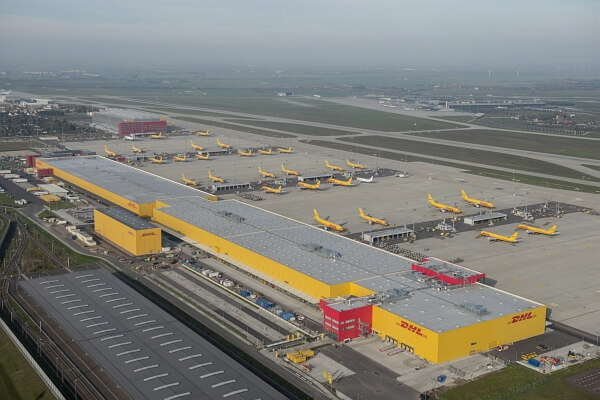
Dozens of aircraft deliver orders worldwide every single day. “Network”, a dispatch system, manages all operations. Workers use wheels and scooters in addition to lifts and elevators to move around the facility.
Example # 3. “The Dry Port” in Odesa
Despite logistics hubs beginning to develop in Ukraine, there are already some examples in the market. “The Dry Port” in Odesa is one of them.
In 2005, Euroterminal was supported by the European Bank for Reconstruction and Development and constructed the logistics center. “The Dry Port” covers an area of 42 hectares (420.000 square meters).
“The Dry Port” helps companies to deliver freights by ground and sea. There are warehouses to store containers, TIR-parking, temporary storage facilities, LCL cargo handling complex in the territory. The Port of Odesa is near.
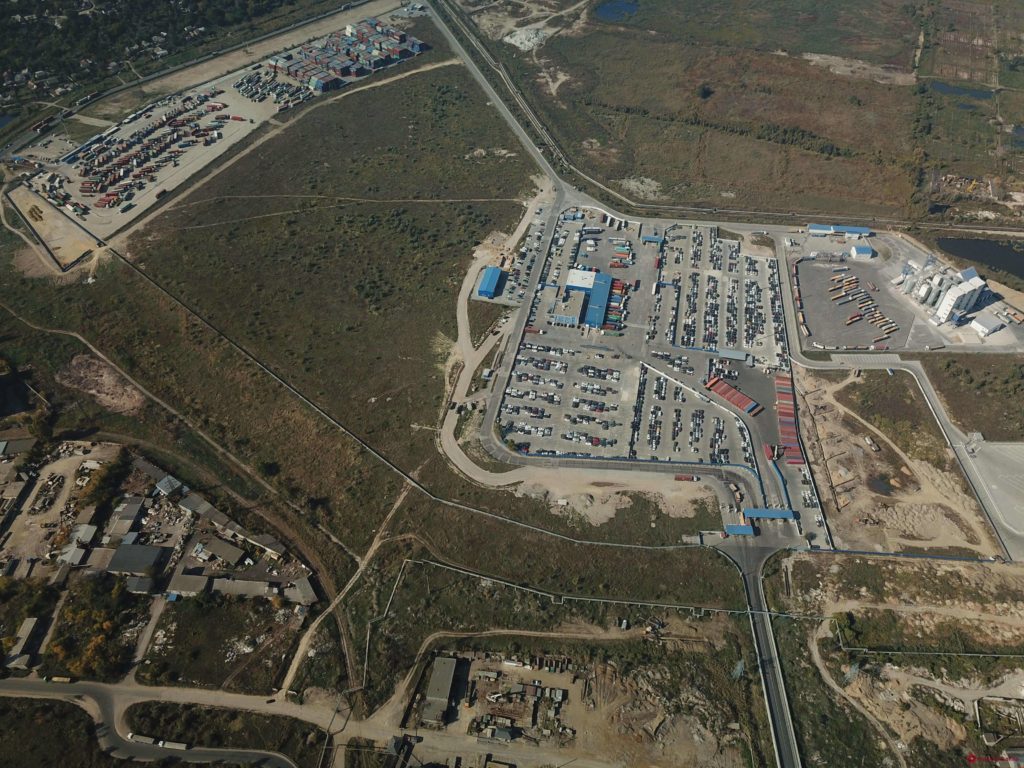
So, “The Dry Port” is a solution to conduct the full range of logistics operations and deliver freights to the Port of Odesa faster. Moreover, goods transport doesn’t go through the city’s highways.
Also, in February 2021, Smart Holding announced that it plans to build a logistics hub in Mykolaiv. The facility will be located in the former shipyard area. This shows that Ukrainian companies have a need in complex logistics solutions.
Conclusions
European countries actively increase their import and export volumes. So, they require huge logistics hub construction that consolidates all supply chain members.
A logistics hub a large-scale warehousing complex to process great volumes of freight. Some facilities can accept more than 1 million TEU. In contrast to warehouses, logistics hubs are entire cities developed for logistics requirements. Storage premises, custom clearance points, transport servicing parks, packing departments can be located here. The hubs’ infrastructure is developed according to business needs.
The construction of the multimodal logistics hubs can alleviate road infrastructure, spread the workload among all supply chain members, reduce customs duties, and improve import-export operations.



